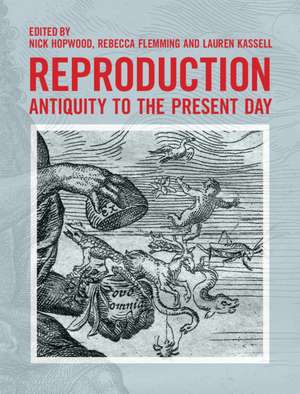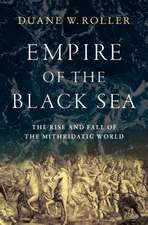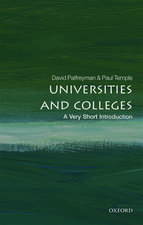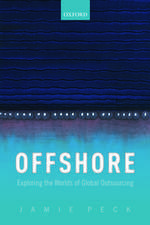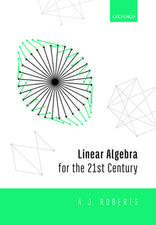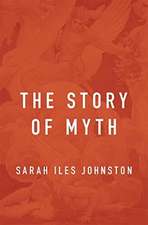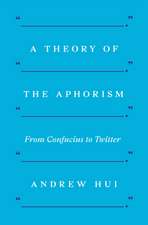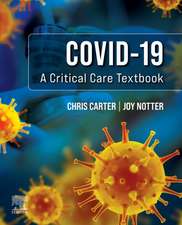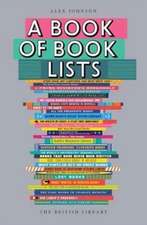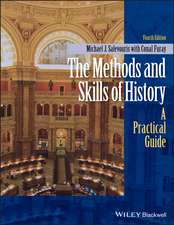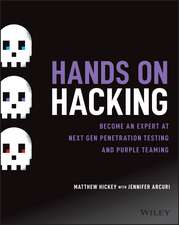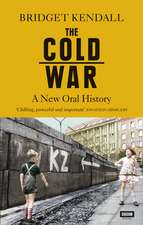Reproduction: Antiquity to the Present Day
Editat de Nick Hopwood, Rebecca Flemming, Lauren Kassellen Limba Engleză Paperback – 7 oct 2020
Preț: 415.38 lei
Preț vechi: 437.24 lei
-5% Nou
Puncte Express: 623
Preț estimativ în valută:
79.49€ • 82.89$ • 66.07£
79.49€ • 82.89$ • 66.07£
Carte disponibilă
Livrare economică 27 februarie-13 martie
Preluare comenzi: 021 569.72.76
Specificații
ISBN-13: 9781107658370
ISBN-10: 1107658373
Pagini: 764
Ilustrații: 163 b/w illus. 40 colour illus. 2 maps 1 table
Dimensiuni: 190 x 246 x 37 mm
Greutate: 1.91 kg
Editura: Cambridge University Press
Colecția Cambridge University Press
Locul publicării:New York, United States
ISBN-10: 1107658373
Pagini: 764
Ilustrații: 163 b/w illus. 40 colour illus. 2 maps 1 table
Dimensiuni: 190 x 246 x 37 mm
Greutate: 1.91 kg
Editura: Cambridge University Press
Colecția Cambridge University Press
Locul publicării:New York, United States
Cuprins
List of colour exhibits; List of illustrations; List of contributors; Acknowledgements; Notes on the frontispieces; Introduction; 1. Reproduction in history Nick Hopwood, Rebecca Flemming and Lauren Kassell; Part I. Inventing Generation: Introduction to Part I Rebecca Flemming; 2. Phallic fertility in the Ancient Near East and Egypt Stephanie Lynn Budin; 3. Women and doctors in ancient Greece Helen King; 4. Animal and plant generation in classical antiquity Laurence M. V. Totelin; 5. States and populations in the classical world Rebecca Flemming; 6. The ancient family and the law Tim Parkin; 7. Galen's generations of seeds Rebecca Flemming; 8. Debating the soul in late antiquity Marie-Hélène Congourdeau; Part II. Generation Reborn and Reformed: Introduction to Part II Lauren Kassell; 9. Generation in medieval Islamic medicine Nahyan Fancy; 10. The multitude in later medieval thought Peter Biller; 11. Managing childbirth and fertility in medieval Europe Katharine Park; 12. Formed fetuses and healthy children in scholastic theology, medicine and law Maaike van der Lugt; 13. Generation between script and print Peter Murray Jones; 14. Innate heat, radical moisture and generation Gianna Pomata; 15. Pictures and analogies in the anatomy of generation Karin Ekholm; 16. Fruitful bodies and astrological medicine Lauren Kassell; 17. Family resemblance in the old regime Silvia De Renzi; 18. The emergence of population Philip Kreager; 19. Generation in the Ottoman world Miri Shefer-Mossensohn and Rebecca Flemming; Part III. Inventing Reproduction: Introduction to Part III Nick Hopwood; 20. The keywords 'generation' and 'reproduction' Nick Hopwood; 21. Linnaeus and the love lives of plants Staffan Müller-Wille; 22. Man-midwifery revisited Mary E. Fissell; 23. Biopolitics and the invention of population Andrea Rusnock; 24. Marriage and fertility in different household systems Richard M. Smith; 25. Colonialism and the emergence of racial theories Renato G. Mazzolini; 26. Talking origins James A. Secord; Part IV. Modern Reproduction: Introduction to Part IV Nick Hopwood; 27. Breeding farm animals and humans Sarah Wilmot; 28. Eggs and sperm as germ cells Florence Vienne; 29. Movements to separate sex and reproduction Lesley A. Hall; 30. Fertility transitions and sexually transmitted infections Simon Szreter; 31. Modern infertility Christina Benninghaus; 32. Modern ignorance Kate Fisher; 33. Imperial encounters Philippa Levine; Part V. Reproduction Centre Stage: Introduction to Part V Nick Hopwood; 34. World population from eugenics to climate change Alison Bashford; 35. Sex hormones, pharmacy and the reproductive sciences Jean-Paul Gaudillière: 36. Technologies of contraception and abortion Jesse Olszynko-Gryn; 37. Hospital birth Salim Al-Gailani; 38. Prenatal diagnosis, surveillance and risk Ilana Löwy; 39. Artificial fertilization Nick Hopwood; 40. Modern law and regulation Martin H. Johnson and Nick Hopwood; 41. Sex, gender and babies John Forrester; 42. Feminism and reproduction Sarah Franklin; 43. Globalization Nick Hopwood; Epilogue; 44. Concluding reflections Nick Hopwood, Rebecca Flemming and Lauren Kassell; Select bibliography; Index; Colour exhibits Rune Nyord, Annetta Alexandridis, Eleanor Robson, Fay Glinister, Jessica Hughes, Ralph Jackson, Véronique Dasen, Margot E. Fassler, Gabriella Zuccolin, Lauren Kassell, Lea T. Olsan, Patricia Simons, Jennifer Spinks, Karin Ekholm, Sandra Cavallo, Rina Knoeff, Lianne McTavish, Lisa Forman Cody, Mary Terrall, Lucia Dacome, Ludmilla Jordanova, Nick Hopwood, Rebecca Flemming, Mary E. Fissell, James A. Secord, Siân Pooley, James M. Edmonson, Paul Weindling, Jenny Bangham, Martina Schlünder, Jesse Olszynko-Gryn, Ellen Herman, Solveig Jülich, Wendy Kline, Patrick Ellis, Christina Brandt, Nick Hopwood, Tatjana Buklijas, Jessica Hughes and Rebecca Flemming.
Recenzii
'A fascinating work of breath taking ambition. It is certain to become a key point of reference for scholars working in a wide range of disciplines.' Sally Sheldon, FAcSS, University of Kent
'This ambitious and extraordinarily well-executed volume offers new and rich insights into the history of reproduction from the ancient world to the modern period. Drawing on the best scholarship, it provides a compendium, a stimulating reframing of the field, and a state-of-the-art guide to further research.' Hilary Marland, University of Warwick
'This is the most ambitious and comprehensive treatise on reproduction that has ever been attempted within the compass of a single volume. It is challenging to think of a perspective that has not been addressed. The impressive range of contributions and illustrations should guarantee the book a very wide appeal.' Sir Richard Gardner, FRS, Emeritus Royal Society Research Professor
'A milestone in reproduction studies, this magnum opus will be invaluable to scholars from multiple disciplines as both resource and inspiration for ambitious projects and innovative approaches. At once dense and refreshing, it mobilizes efforts of superb scholars to bring us up-to-date historically, transnationally and transculturally, powerfully demonstrating the centrality of reproduction in human life.' Adele E. Clarke, Professor Emerita of Sociology and History of Health Sciences, University of California, San Francisco
'This remarkably wide-ranging and lavishly illustrated history takes in everything from 'phallic fertility in the Ancient Near East and Egypt' and 'women and doctors in Ancient Greece' to population in an era of climate change, artificial fertilisation and globalisation. Among countless other topics, the dozens of contributors explore astrological medicine; our developing understanding of both 'generation' and 'reproduction'; ignorance and infertility; hormones, prenatal diagnosis and pregnancy testing with frogs; even Aristotle's strange theory that hyenas are hermaphrodite. The result is a stunning and scholarly overview of one of the central aspects of human life.' Times Higher Education
'… [a] studious, insightful brainstorm of research and revelation into an often sensitive topic. Highly recommended, especially for college and university library World History and Social Issues collections.' Library Bookwatch
'It is hard to do justice to a book of such size, complexity and range … In this project, an international group of scholars has combined to produce what has turned into an authoritative, impressive volume.' Anne Crowther, Times Literary Supplement
'By looking at the history of generation and reproduction across such a large chronological scale, such a large thematic scope (from egg to population), and in such a variety of geographical spaces, Reproduction allows us to better understand the complexity of our current world and opens up new ways of thinking about sexuality and ways of procreating … It also equips us intellectually to reflect on current issues surrounding reproduction and to develop a critical attitude toward contemporary developments in this domain. Moreover, Reproduction provides us with an excellent pedagogical tool, which is likely to help us to renew and refresh our teaching in the history of the life sciences and medicine. No doubt, this book constitutes a large and rich source of texts that will be relevant to teach and trigger discussions during seminar readings.' Marion Thomas, H-Net
'The scholarship throughout is at the highest level, the writing is engaging and informative, and the volume is lavishly illustrated … As a single-volume history of reproduction, Reproduction could not be better. It is sure to become a valuable resource for anyone engaged with the history of sexuality.' Ian Frederick Moulton, Journal of the History of Sexuality
'While illustrations are found throughout the book, the inclusion of exhibits in Reproduction is one of its greatest strengths … Reproduction … include[s] … a remarkable range of subjects from an impressive group of scholars. The editors have deftly organized this material, which ranges over such a long timeframe, into a coherent whole …' R. Allen Shotwell, Early Science and Medicine
'Reproduction builds a new synthesis of how Europeans have understood the production and renewal of life. Of particular note is the complex interweaving of the contributors' collective arguments; by engaging with each other's work, the chapters form a set of discussions where new connections and contrasts can be found beyond those normally developed in studies of more limited historical and geographical scope… Triangulating the chapters with their illustrations and the free-standing object exhibits allows readers to build complex paths through the narrative of Western attitudes to birth, reproduction and population. In sum, Reproduction is a sophisticated and comprehensive work that simultaneously summarises a generation's work in the history of science and, by the very fact of its synthesis, breaks new ground. The editors are to be thanked for the scale of their ambition for this project as is the publisher for honouring that ambition by the generous production standards the book embodies. Reproduction will become a standard work of reference but should also become a core teaching text for advanced undergraduate courses in medical history, the history of population and gender studies.' Robert J. Mayhew, Journal of Historical Geography
'Reproduction is an encyclopaedic book that is not an encyclopaedia; it is a great attempt to return to the ambitious projects of the longue durée and to tackle them from the multidisciplinary perspective of total history. A book recommended for students of the history of science, but also for professionals concerned with reproduction today.' Raúl Velasco Morgado, Dynamis
'It is difficult to do justice to Reproduction's utterly unparalleled scale and ambition, and, consequently, it is difficult to avoid bad puns, for this truly is a seminal volume. It is a hugely impressive achievement. Reproduction provides exceptional entry points for students and non-specialists while setting dozens of specialist research agendas as well as some big ones.' Zubin Mistry, Gender & History
'The exhibits provide much more accessible material for teaching … graduate students … will find plenty of inspiration and useful bibliographic materials, and scholars who teach in the area will want this collection on their bookshelves. The collection would be of particular use to modernists who want to beef up their knowledge of premodern 'generation' to enhance their research and supplement their teaching.' Lara Freidenfelds, History of Science, Technology, and Medicine
'This ambitious and extraordinarily well-executed volume offers new and rich insights into the history of reproduction from the ancient world to the modern period. Drawing on the best scholarship, it provides a compendium, a stimulating reframing of the field, and a state-of-the-art guide to further research.' Hilary Marland, University of Warwick
'This is the most ambitious and comprehensive treatise on reproduction that has ever been attempted within the compass of a single volume. It is challenging to think of a perspective that has not been addressed. The impressive range of contributions and illustrations should guarantee the book a very wide appeal.' Sir Richard Gardner, FRS, Emeritus Royal Society Research Professor
'A milestone in reproduction studies, this magnum opus will be invaluable to scholars from multiple disciplines as both resource and inspiration for ambitious projects and innovative approaches. At once dense and refreshing, it mobilizes efforts of superb scholars to bring us up-to-date historically, transnationally and transculturally, powerfully demonstrating the centrality of reproduction in human life.' Adele E. Clarke, Professor Emerita of Sociology and History of Health Sciences, University of California, San Francisco
'This remarkably wide-ranging and lavishly illustrated history takes in everything from 'phallic fertility in the Ancient Near East and Egypt' and 'women and doctors in Ancient Greece' to population in an era of climate change, artificial fertilisation and globalisation. Among countless other topics, the dozens of contributors explore astrological medicine; our developing understanding of both 'generation' and 'reproduction'; ignorance and infertility; hormones, prenatal diagnosis and pregnancy testing with frogs; even Aristotle's strange theory that hyenas are hermaphrodite. The result is a stunning and scholarly overview of one of the central aspects of human life.' Times Higher Education
'… [a] studious, insightful brainstorm of research and revelation into an often sensitive topic. Highly recommended, especially for college and university library World History and Social Issues collections.' Library Bookwatch
'It is hard to do justice to a book of such size, complexity and range … In this project, an international group of scholars has combined to produce what has turned into an authoritative, impressive volume.' Anne Crowther, Times Literary Supplement
'By looking at the history of generation and reproduction across such a large chronological scale, such a large thematic scope (from egg to population), and in such a variety of geographical spaces, Reproduction allows us to better understand the complexity of our current world and opens up new ways of thinking about sexuality and ways of procreating … It also equips us intellectually to reflect on current issues surrounding reproduction and to develop a critical attitude toward contemporary developments in this domain. Moreover, Reproduction provides us with an excellent pedagogical tool, which is likely to help us to renew and refresh our teaching in the history of the life sciences and medicine. No doubt, this book constitutes a large and rich source of texts that will be relevant to teach and trigger discussions during seminar readings.' Marion Thomas, H-Net
'The scholarship throughout is at the highest level, the writing is engaging and informative, and the volume is lavishly illustrated … As a single-volume history of reproduction, Reproduction could not be better. It is sure to become a valuable resource for anyone engaged with the history of sexuality.' Ian Frederick Moulton, Journal of the History of Sexuality
'While illustrations are found throughout the book, the inclusion of exhibits in Reproduction is one of its greatest strengths … Reproduction … include[s] … a remarkable range of subjects from an impressive group of scholars. The editors have deftly organized this material, which ranges over such a long timeframe, into a coherent whole …' R. Allen Shotwell, Early Science and Medicine
'Reproduction builds a new synthesis of how Europeans have understood the production and renewal of life. Of particular note is the complex interweaving of the contributors' collective arguments; by engaging with each other's work, the chapters form a set of discussions where new connections and contrasts can be found beyond those normally developed in studies of more limited historical and geographical scope… Triangulating the chapters with their illustrations and the free-standing object exhibits allows readers to build complex paths through the narrative of Western attitudes to birth, reproduction and population. In sum, Reproduction is a sophisticated and comprehensive work that simultaneously summarises a generation's work in the history of science and, by the very fact of its synthesis, breaks new ground. The editors are to be thanked for the scale of their ambition for this project as is the publisher for honouring that ambition by the generous production standards the book embodies. Reproduction will become a standard work of reference but should also become a core teaching text for advanced undergraduate courses in medical history, the history of population and gender studies.' Robert J. Mayhew, Journal of Historical Geography
'Reproduction is an encyclopaedic book that is not an encyclopaedia; it is a great attempt to return to the ambitious projects of the longue durée and to tackle them from the multidisciplinary perspective of total history. A book recommended for students of the history of science, but also for professionals concerned with reproduction today.' Raúl Velasco Morgado, Dynamis
'It is difficult to do justice to Reproduction's utterly unparalleled scale and ambition, and, consequently, it is difficult to avoid bad puns, for this truly is a seminal volume. It is a hugely impressive achievement. Reproduction provides exceptional entry points for students and non-specialists while setting dozens of specialist research agendas as well as some big ones.' Zubin Mistry, Gender & History
'The exhibits provide much more accessible material for teaching … graduate students … will find plenty of inspiration and useful bibliographic materials, and scholars who teach in the area will want this collection on their bookshelves. The collection would be of particular use to modernists who want to beef up their knowledge of premodern 'generation' to enhance their research and supplement their teaching.' Lara Freidenfelds, History of Science, Technology, and Medicine
Descriere
Authoritative, accessible and abundantly illustrated, this book presents a broad history of reproduction over the long term.
